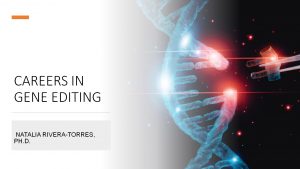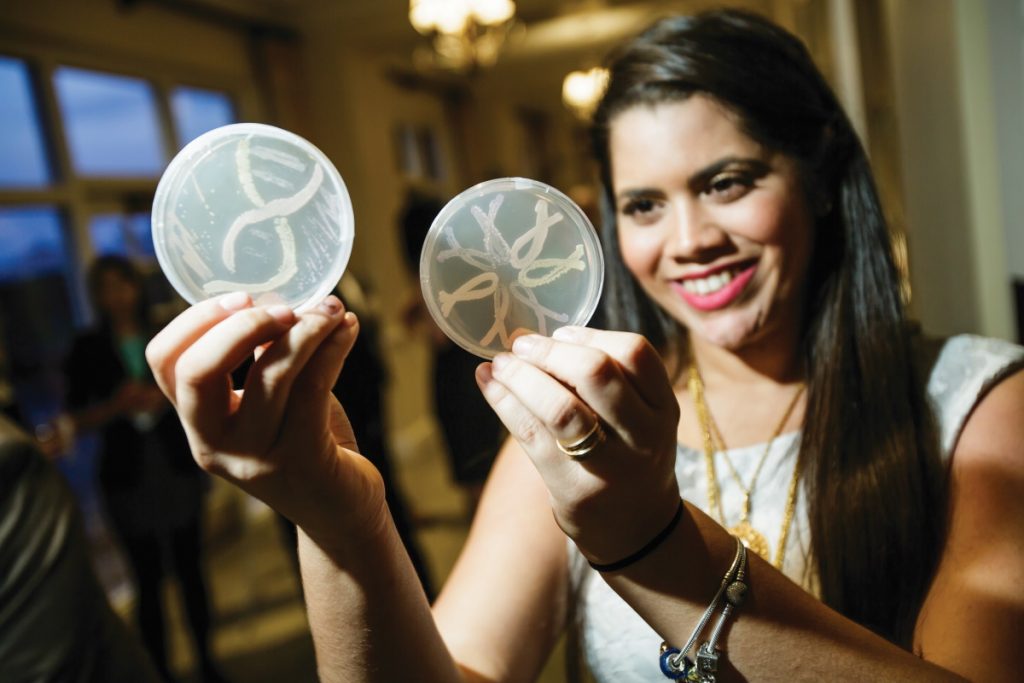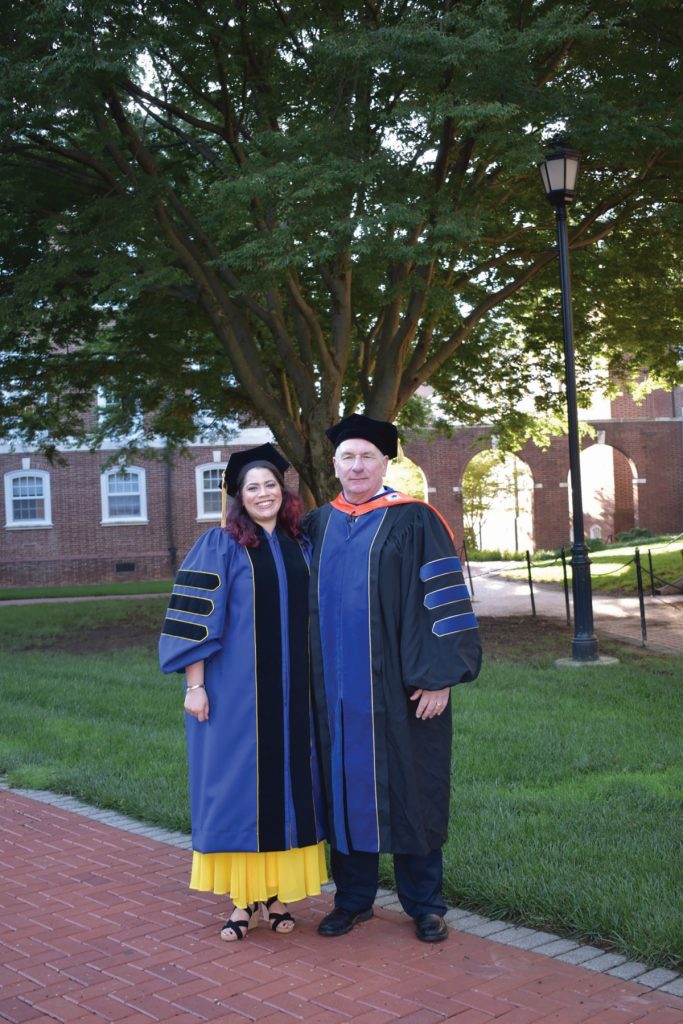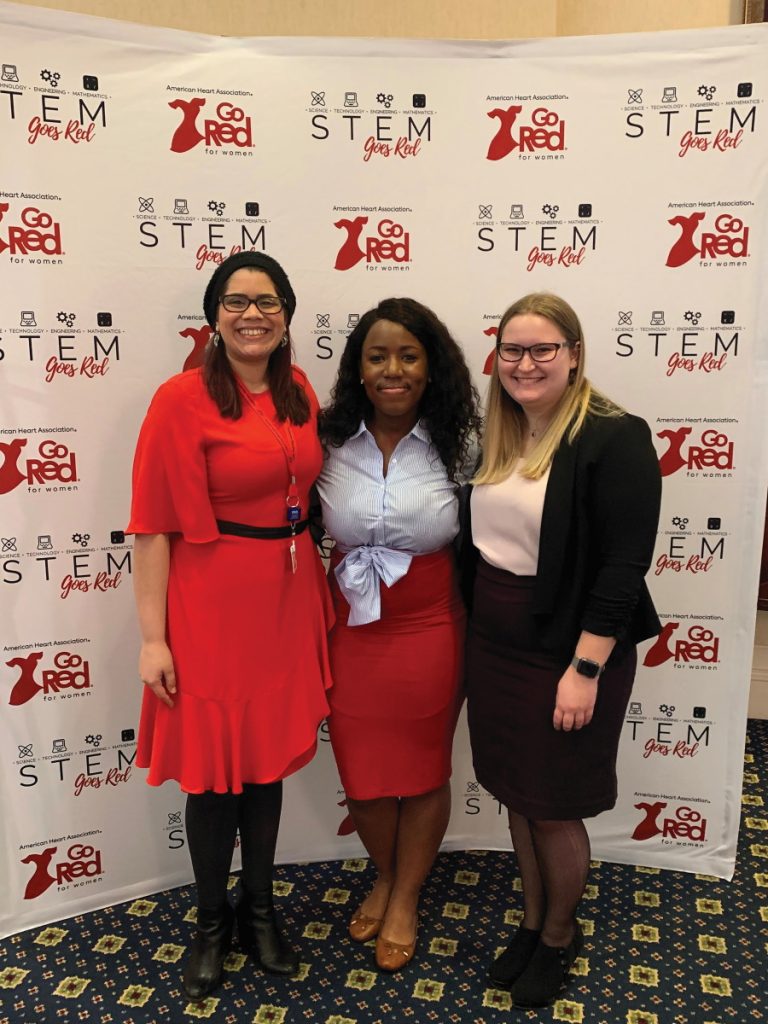Editing genes to benefit sickle cell disease patients
Dr Natalia Rivera-Torres is conducting sickle cell research at ChristianaCare’s Gene Editing Institute in Delaware in the US. The institute is an aspirational and supportive community composed of people at different stages of their career – all of whom do ground-breaking work
Genes are amazing. They are units of deoxyribonucleic acid (DNA) and carry information that determines the features and characteristics that are passed down to you from your parents, such as the colour of your eyes or the texture of your hair. It is estimated that each cell in the human body contains between 25,000 to 35,000 genes, contained within chromosomes.
Unfortunately, genes sometimes carry an error in their DNA sequence that leads to a person inheriting health conditions and diseases. One of these health conditions is sickle cell anaemia, which affects red blood cells. It is especially common in people with an African or Caribbean heritage and is a serious, lifelong condition. One of the main effects is that red blood cells cannot carry enough oxygen around the body, causing fatigue and shortness of breath. Sickle cell anaemia is incurable, although treatment can help patients manage many of the symptoms.
Dr Natalia Rivera-Torres, based at ChristianaCare’s Gene Editing Institute in Delaware in the US, is conducting sickle cell research which relies heavily on gene editing principles. It is hoped that her work will lead to the ability to predict how each person’s blood stem cells will respond to gene editing to develop better treatments. Natalia and the team are working to identify the optimal CRISPR molecules that can provide a more universal response to sickle cell anaemia. The aim is to develop a prediction index that will determine the effectiveness of CRISPR-directed gene editing in individual patients.
WHAT IS CRISPR AND WHY IS SICKLE CELL DISEASE A GOOD CANDIDATE FOR IT?
CRISPR is a relatively new technology that can be used to edit genes. It is difficult to overstate the potential importance of CRISPR; it will likely change the world in ways that would have been unimaginable just a few years ago. CRISPR enables scientists to find a specific part of DNA inside a cell, from where it can be altered. One particularly exciting possibility is that genes can be turned on or off without altering the sequence of DNA – this could lead to a world where the genomes of children are changed to prevent diseases such as sickle cell. “Sickle cell disease is caused by a single mutation in the β-globin gene that results in hard distorted red blood cells with a sickle shape. This leads to diverse clinical manifestations with poor quality of life and early death,” explains Natalia. “CRISPR has opened the possibility of fixing the single mutation in a more controlled and efficient way than previous gene therapy technologies.”
WHAT CHALLENGES DOES NATALIA’S RESEARCH POSE?
It is believed that genetic diversity among individuals changes the way human cells respond to treatment of any kind and, thus, a more robust approach, particularly with the goal of developing a new therapy for sickle cell disease, must consider natural genomic variation. Natalia and her team are looking into the development of a novel therapy for sickle cell disease that will set the foundation for understanding the importance of genetic diversity in the development of many genetic treatments.
HAVE THERE BEEN ANY SUCCESSES SO FAR?
Yes! The first and most unique step in Natalia’s research is the preparation of cell-free extracts from healthy donors or sickle cell patients. “By making these extracts, I can test each individual’s response to gene editing outside of the cells,” says Natalia. “Being able to produce cell-free extracts from blood stem cells to test gene editing outside of a cell, with similar outcomes to ones observed inside the cell, is a significant step forward.”
HOW COULD NATALIA’S RESEARCH IMPACT LIVES?
Predicting and understanding patient population genetic variations on gene editing outcomes will lead to better and more precise universal treatments. Ultimately, this could lead to substantial improvements in the health and quality of life for sickle cell patients, as edited cells have been found to produce normal, functioning haemoglobin. Achieving this is at the forefront of alleviating patient distress, so the outlook is good.
WHAT MAKES THE GENE EDITING INSTITUTE’S LAB AN EXCITING PLACE TO WORK?
One of the aims of the lab is to get high school and college students involved in tackling sickle cell disease. There is a culture of inclusion, aspiration and producing a real sense of community in the lab – from the founder and director, through to the research scientists and assistants. By encouraging young students to get involved, producing the next generation of gene editors and researchers is made easier. “In my experience, students have been curious with all sorts of questions from what are the capabilities of the science behind CRISPR gene editing to what life is like as a scientist – it’s not every day that they get to talk to a real-life scientist who they can relate to and ask anything they want,” explains Natalia. “They are interested in learning more about the science when we can give them real-life examples of how people they might know can benefit from it.”
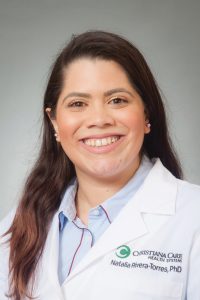 DR NATALIA RIVERA-TORRES
DR NATALIA RIVERA-TORRES
Research Scientist, Gene Editing Institute, ChristianaCare, Delaware, USA.
FIELD OF RESEARCH: Gene Editing
RESEARCH PROJECT: Natalia is developing a platform for predicting gene editing outcomes in diverse patient populations with sickle cell anaemia.
FUNDERS: National Institutes of Health (P20-GM109021)
The B+ Foundation (‘Be Positive’)
HOW DID NATALIA BECOME A GENE EDITOR?
WHAT WERE YOUR INTERESTS AS A CHILD?
As a child, I was heavily involved in music and the performing arts to the extent that I contemplated becoming an opera singer! But I was also very intrigued in science and biology, which maybe started when my parents got me a red microscope for my 7th birthday. As I grew older, the more fascinated I became with the new discoveries in biology and music became more of a hobby.
WHO OR WHAT INSPIRED YOU TO BECOME A SCIENTIST?
I was exposed to science from a young age through my father who is a physiologist and had a research lab of his own. As a kid, I would spend time in his lab, wanting to play and experiment with all the interesting things in there. I became fascinated by the concept of experimentation to find results to questions and it opened the door of understanding that there was an infinite number of things that we had no answers to, and that it was through science that those answers would be found. As I grew older, and the more I learned biology in school, the more molecular biology and genetics appealed to me.
WHAT ATTRIBUTES HAVE MADE YOU A SUCCESSFUL SCIENTIST?
I am a hard worker who is passionate about the projects I take on – I like to see them completed, regardless how challenging they might be. I am not afraid to learn new techniques and am aware I do not know everything; I recognise what I am not so good at and am open to asking for help and collaborating with people who are better in those areas. I also consider myself humble and approachable to those around me who might need assistance.
WHAT ARE YOUR PROUDEST CAREER ACHIEVEMENTS?
The day I successfully defended my PhD thesis – that was a major life accomplishment! Publishing my first paper as a first author was also a highlight.
NATALIA’S TOP TIPS
01 Your career pathway will be challenging at times but see these challenges as an opportunity to grow and overcoming them will be easier. Remember: failures are learning moments!
02 Try to be yourself, at all times. Your perspective on things is unique to you and that can be extremely beneficial to your critical thinking skills.
03 Look out for – and actively pursue – any opportunities to get involved in research from an early stage of your career. It will always help your future.
PROFILE: ERIC KMIEC, PH.D.
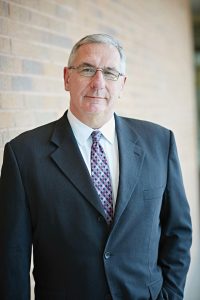
Dr Eric Kmiec is the founder and director of the Gene Editing Institute. His research centres on understanding the process of gene repair and gene editing with a focus on CRISPR-directed genome engineering in human cells.
Reference
https://doi.org/10.33424/FUTURUM113
Unfortunately, genes sometimes carry an error in their DNA sequence that leads to a person inheriting health conditions and diseases. One of these health conditions is sickle cell anaemia, which affects red blood cells. It is especially common in people with an African or Caribbean heritage and is a serious, lifelong condition. One of the main effects is that red blood cells cannot carry enough oxygen around the body, causing fatigue and shortness of breath. Sickle cell anaemia is incurable, although treatment can help patients manage many of the symptoms.
Dr Natalia Rivera-Torres, based at ChristianaCare’s Gene Editing Institute in Delaware in the US, is conducting sickle cell research which relies heavily on gene editing principles. It is hoped that her work will lead to the ability to predict how each person’s blood stem cells will respond to gene editing to develop better treatments. Natalia and the team are working to identify the optimal CRISPR molecules that can provide a more universal response to sickle cell anaemia. The aim is to develop a prediction index that will determine the effectiveness of CRISPR-directed gene editing in individual patients.
WHAT IS CRISPR AND WHY IS SICKLE CELL DISEASE A GOOD CANDIDATE FOR IT?
CRISPR is a relatively new technology that can be used to edit genes. It is difficult to overstate the potential importance of CRISPR; it will likely change the world in ways that would have been unimaginable just a few years ago. CRISPR enables scientists to find a specific part of DNA inside a cell, from where it can be altered. One particularly exciting possibility is that genes can be turned on or off without altering the sequence of DNA – this could lead to a world where the genomes of children are changed to prevent diseases such as sickle cell. “Sickle cell disease is caused by a single mutation in the β-globin gene that results in hard distorted red blood cells with a sickle shape. This leads to diverse clinical manifestations with poor quality of life and early death,” explains Natalia. “CRISPR has opened the possibility of fixing the single mutation in a more controlled and efficient way than previous gene therapy technologies.”
WHAT CHALLENGES DOES NATALIA’S RESEARCH POSE?
It is believed that genetic diversity among individuals changes the way human cells respond to treatment of any kind and, thus, a more robust approach, particularly with the goal of developing a new therapy for sickle cell disease, must consider natural genomic variation. Natalia and her team are looking into the development of a novel therapy for sickle cell disease that will set the foundation for understanding the importance of genetic diversity in the development of many genetic treatments.
HAVE THERE BEEN ANY SUCCESSES SO FAR?
Yes! The first and most unique step in Natalia’s research is the preparation of cell-free extracts from healthy donors or sickle cell patients. “By making these extracts, I can test each individual’s response to gene editing outside of the cells,” says Natalia. “Being able to produce cell-free extracts from blood stem cells to test gene editing outside of a cell, with similar outcomes to ones observed inside the cell, is a significant step forward.”
HOW COULD NATALIA’S RESEARCH IMPACT LIVES?
Predicting and understanding patient population genetic variations on gene editing outcomes will lead to better and more precise universal treatments. Ultimately, this could lead to substantial improvements in the health and quality of life for sickle cell patients, as edited cells have been found to produce normal, functioning haemoglobin. Achieving this is at the forefront of alleviating patient distress, so the outlook is good.
WHAT MAKES THE GENE EDITING INSTITUTE’S LAB AN EXCITING PLACE TO WORK?
One of the aims of the lab is to get high school and college students involved in tackling sickle cell disease. There is a culture of inclusion, aspiration and producing a real sense of community in the lab – from the founder and director, through to the research scientists and assistants. By encouraging young students to get involved, producing the next generation of gene editors and researchers is made easier. “In my experience, students have been curious with all sorts of questions from what are the capabilities of the science behind CRISPR gene editing to what life is like as a scientist – it’s not every day that they get to talk to a real-life scientist who they can relate to and ask anything they want,” explains Natalia. “They are interested in learning more about the science when we can give them real-life examples of how people they might know can benefit from it.”
 DR NATALIA RIVERA-TORRES
DR NATALIA RIVERA-TORRES
Research Scientist, Gene Editing Institute, ChristianaCare, Delaware, USA.
FIELD OF RESEARCH: Gene Editing
RESEARCH PROJECT: Natalia is developing a platform for predicting gene editing outcomes in diverse patient populations with sickle cell anaemia.
FUNDERS: National Institutes of Health (P20-GM109021)
The B+ Foundation (‘Be Positive’)
HOW DID NATALIA BECOME A GENE EDITOR?
WHAT WERE YOUR INTERESTS AS A CHILD?
As a child, I was heavily involved in music and the performing arts to the extent that I contemplated becoming an opera singer! But I was also very intrigued in science and biology, which maybe started when my parents got me a red microscope for my 7th birthday. As I grew older, the more fascinated I became with the new discoveries in biology and music became more of a hobby.
WHO OR WHAT INSPIRED YOU TO BECOME A SCIENTIST?
I was exposed to science from a young age through my father who is a physiologist and had a research lab of his own. As a kid, I would spend time in his lab, wanting to play and experiment with all the interesting things in there. I became fascinated by the concept of experimentation to find results to questions and it opened the door of understanding that there was an infinite number of things that we had no answers to, and that it was through science that those answers would be found. As I grew older, and the more I learned biology in school, the more molecular biology and genetics appealed to me.
WHAT ATTRIBUTES HAVE MADE YOU A SUCCESSFUL SCIENTIST?
I am a hard worker who is passionate about the projects I take on – I like to see them completed, regardless how challenging they might be. I am not afraid to learn new techniques and am aware I do not know everything; I recognise what I am not so good at and am open to asking for help and collaborating with people who are better in those areas. I also consider myself humble and approachable to those around me who might need assistance.
WHAT ARE YOUR PROUDEST CAREER ACHIEVEMENTS?
The day I successfully defended my PhD thesis – that was a major life accomplishment! Publishing my first paper as a first author was also a highlight.
NATALIA’S TOP TIPS
01 Your career pathway will be challenging at times but see these challenges as an opportunity to grow and overcoming them will be easier. Remember: failures are learning moments!
02 Try to be yourself, at all times. Your perspective on things is unique to you and that can be extremely beneficial to your critical thinking skills.
03 Look out for – and actively pursue – any opportunities to get involved in research from an early stage of your career. It will always help your future.
PROFILE: ERIC KMIEC, PH.D.

Dr Eric Kmiec is the founder and director of the Gene Editing Institute. His research centres on understanding the process of gene repair and gene editing with a focus on CRISPR-directed genome engineering in human cells.
I grew up in a very blue-collar town and neighbourhood and neither of my parents went to college. I am most proud of that because it taught me to work hard and to never forget my roots.
As a student, I was pretty good. My best subjects were probably biology and American history. I was a fanatical butterfly catcher, capturing them, mounting them in small frames and providing them as gifts at Christmas.
My father was insistent that I focus hard on my studies and so I think he was my first inspiration. He worked at Monsanto in the pilot plant without ever earning a college degree. Kathy Dorey, Ph.D., at Southern Illinois University stands out as someone who showed me what an academic life could be like.
There is no question that relentless dedication, intense hard work and never giving up on your ideas and dreams is at the centre of success. But, it is equally important to recognise when you are chasing a hallucination – self-reflection is gained through lifelong learning and experience and being observational rationale and truthful about yourself.
I have been able to craft innovative ideas on how genes could be repaired in mammalian cells. This was the result of attaining and using a strong background in the molecular biology of recombination and repair processes, and understanding the cellular mechanisms that repair DNA.
It was very tough in the early years of gene editing as most workers in the field of gene therapy did not believe gene editing or gene correction would ever work. There were only a handful of scientists in the field and the potential of our work with not taken very seriously. I am proud that we kept going, fought uphill and sustained our ideas, despite a lot of early criticism that we were not only wrong but fanciful.
The CRISPR tool has allowed us to increase the frequency with which we repair genes and increase the precision with which we disable them. While none of the basic reactions of gene editing are new, and some parameters we identified ourselves years ago, CRISPR allowed us to pinpoint where we want to make these changes in a much more precise and efficient fashion.
It was a big moment when we were first able to use synthetic single-stranded DNA templates to correct the point mutation in a mammalian cell. These are experiments conducted in a model system in which the cell was colourless until the targeted gene was corrected, and then it turned green.
In those early days, there were probably only two cells out of a thousand that were green, but they grew and expanded, and we were thrilled to see them appear. When my graduate student, Brett Sansbury, Ph.D., developed the system and was able to do gene editing on a chip, it was fantastic and something I had always dreamed of.
Now is the most exciting time to be a geneticist and for young people to choose to study gene editing. With the molecular toolbox created by our generation, and the imagination and computational skill set of our younger generations, the possibilities are simply endless. Excellent technological developments, with a serious dose of humanity and ethics, is what the next generation will have to deal with, but I am confident they will do so intelligently.
PROFILE: KRISTEN PISARCIK
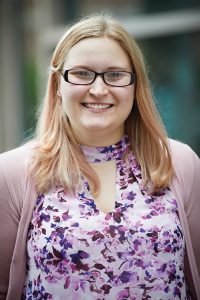
Kristen Pisarcik is a research assistant and science educator at ChristianaCare’s Gene Editing Institute.
As a child, science and photography were my primary interests. I have always enjoyed biology, specifically marine biology, astronomy, and archaeology. I was also interested in anything art-related but enjoyed photography and knitting the most.
I remember I got my hands on a book about all the different kinds of dolphins and whales in the world and, from that moment on, I knew I was going to do some sort of biology. Most of my inspiration came from reading books that contained as much information as I could digest.
I started working at the Gene Editing Institute as a student at Delaware Technical Community College doing undergraduate research. After graduation with my associate degree, I continued to work with them on a grant. Currently, I am pursuing my bachelor’s degree, with hopes to complete my master’s and maybe a doctorate.
My role is to listen in to all the research being done in the lab and then think about ways that this high-level science could be converted into curriculum for students at any level. This includes materials as well as potential laboratory exercises.
The most challenging and rewarding part of this is definitely taking the complicated science and making it understandable and accessible to students and the general public.
My role requires collaboration on every level. I am commonly talking to students, to teachers (at all levels), or to foundations/companies/ organisations. I have learned that this role is based on the collaboration and feedback of others.
I have many ambitions for the future. I hope to reach as many students, in as many backgrounds, with as many levels of education as possible, to talk about gene editing and science in general. If I can spark an interest in science in any student, I will be happy. I also hope to be able to work on a gene editing project that leads to a cure or therapy for a disease – I think that would be something really cool to contribute to!
HOW TO BECOME A GENE EDITOR
• The Genetics Society of America is the professional membership organisation for scientific researchers and educators in genetics and an important resource for those interested: https://genetics-gsa.org/
• CRISPR/Cas9 is a specific, efficient and versatile gene-editing technology. Put simply, it is advancing the field and is therefore essential reading: http://www.crisprtx.com/gene-editing/crispr-cas9
• The average salary can range anywhere between $24,000 and $80,000, depending on the level of experience: https://nationalcareers.service.gov.uk/job-profiles/geneticist
PATHWAY FROM SCHOOL TO GENE EDITING
Natalia says that while there are multiple routes into gene editing, some subjects you might want to consider taking are biology, genetics, molecular and cellular biology, molecule genetics and biochemistry. You will need a degree in a relevant subject for postgraduate study.
https://nationalcareers.service.gov.uk/job-profiles/geneticist
Write it in the comments box below and Natalia, Eric or Kristen will get back to you. (Remember, researchers are very busy people, so you may have to wait a few days.)



